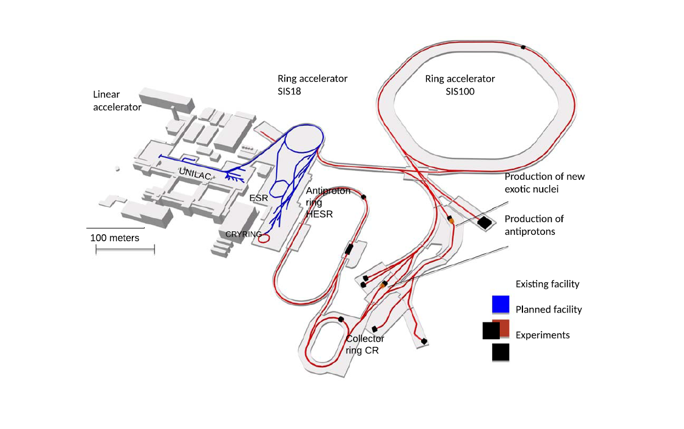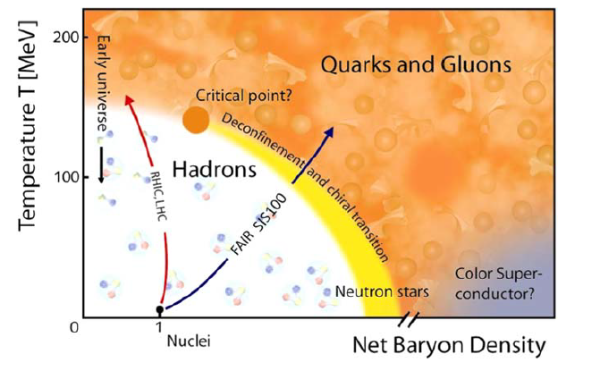New paper published on physics opportunities at FAIR

The Facility for Antiproton and Ion Research (FAIR) will open up unprecedented research opportunities in hadron and nuclear physics, atomic physics and nuclear astrophysics, as well as in applied sciences including materials research, plasma physics and radiation biophysics with applications towards novel medical treatments and space science. The facility drives an international R&D program into accelerator science, new detector technologies and advanced beam instrumentation for superior beam monitoring capabilities.
Sketch of the QCD phase diagram including a critical point and a first order co-existence region. Also shown are typical trajectories of heavy ion collisions at LHC, RHIC and FAIR. (Image copyright FAIR)
The facility is currently under construction as an international facility at the campus of the GSI Helmholtz Centre for Heavy-Ion Research in Darmstadt, Germany. While the full science potential of FAIR can only be harvested once the new suite of accelerators and storage rings will be completed and fully operational, some of the detectors and instrumentation are already available and have been used since summer 2018. They have already taken advance of the upgraded GSI accelerator complex.
In a paper just published in Physica Scripta, an overview of the exciting physics program at FAIR is given. This also includes prospects for R&D at a dedicated Facility for Low energy Antiproton and Ion Research (FLAIR) which will allow hitherto impossible experiments with ultra-low beams of ions and antiprotons.
Further information:
M Durante, et al., "All the fun of the FAIR: fundamental physics at the facility for antiproton and ion research", Physica Scripta, Volume 94, Number 3 (2019).
